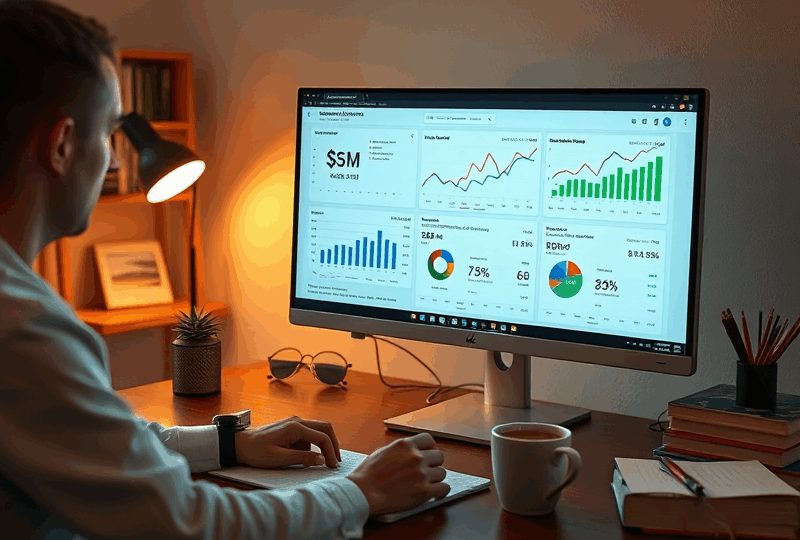
AdSense RPM: Specific Strategies to Maximize Your Earnings

If you’re a U.S.-based content creator looking to monetize your blog or website with Google AdSense, understanding and optimizing your RPM (Revenue Per Mille) is crucial. RPM represents the estimated earnings per 1,000 page views, and it’s a key metric that reflects how effectively your content is generating revenue. In this guide, we’ll explore actionable, up-to-date strategies to help you increase your AdSense RPM without violating any of Google’s policies.
Understand What Influences RPM
Before diving into optimization tactics, it’s important to understand what affects your RPM. Key factors include:
– Traffic source and geography (U.S. traffic typically has higher RPMs)
– Niche and content relevance
– Ad placement and format
– User engagement and session duration
– Device type (desktop often yields higher RPM than mobile)
By focusing on these variables, you can make data-driven decisions to improve your earnings.
Target High-Value Niches
Certain niches attract higher-paying advertisers. In the U.S., topics like personal finance, health insurance, legal advice, and technology tend to have higher Cost Per Click (CPC), which directly impacts your RPM. If your content aligns with these areas, you’re more likely to attract premium ads.
Optimize for U.S. Traffic
Since your audience is based in the United States, tailor your content to U.S. readers. Use American English, reference U.S. laws or systems, and address region-specific concerns. Also, promote your content through channels that are popular in the U.S., such as Reddit, Pinterest, and Facebook groups.
Improve User Experience and Engagement
Google rewards websites that offer a positive user experience. A clean layout, fast-loading pages, and mobile responsiveness can reduce bounce rates and increase session duration—both of which positively influence RPM. Use tools like Google PageSpeed Insights and Core Web Vitals to identify areas for improvement.
Experiment with Ad Placement and Formats
Strategic ad placement can significantly boost your RPM. Try placing ads:
– Above the fold (visible without scrolling)
– Within content (in-article ads)
– At the end of articles
Also, experiment with different ad formats like display ads, in-feed ads, and matched content. Use Google’s Auto Ads to let machine learning optimize placements for you, but always monitor performance.
Increase Organic Search Traffic
Search traffic, especially from Google, tends to have higher RPM than social or referral traffic. Focus on SEO best practices:
– Use keyword research tools like Ahrefs or Ubersuggest
– Write long-form, informative content
– Optimize meta titles and descriptions
– Build high-quality backlinks
This will help you attract targeted visitors who are more likely to engage with ads.
Use AdSense Experiments
Google AdSense offers built-in A/B testing tools under the “Experiments” tab. You can test different ad styles, sizes, and colors to see what performs best. This data-driven approach helps you fine-tune your ad strategy for maximum RPM.
Filter Low-Paying Ad Categories
Not all ads are created equal. Some categories, like dating or gaming, may have lower CPCs. You can block these under “Blocking Controls” in your AdSense dashboard. Be cautious though—blocking too many categories can reduce overall ad inventory.
Monitor Performance and Adjust
Use Google Analytics and AdSense reports to track RPM trends. Look for patterns—does RPM drop on weekends? Do certain pages perform better? Use this data to replicate success and adjust underperforming content.
Stay Updated with AdSense Policies
Google frequently updates its policies and algorithm. Subscribe to the official AdSense blog and join forums like WebmasterWorld or Reddit’s r/AdSense to stay informed. Following best practices ensures your account remains in good standing while maximizing revenue.
Final Thoughts
Increasing your AdSense RPM is not about tricking the system—it’s about delivering high-quality content, optimizing user experience, and making smart, data-backed decisions. By implementing the strategies above, you’ll be well on your way to turning your blog into a sustainable source of income.
If you have any questions or want to share your experience, feel free to leave a comment below. I’d love to hear from fellow creators!



